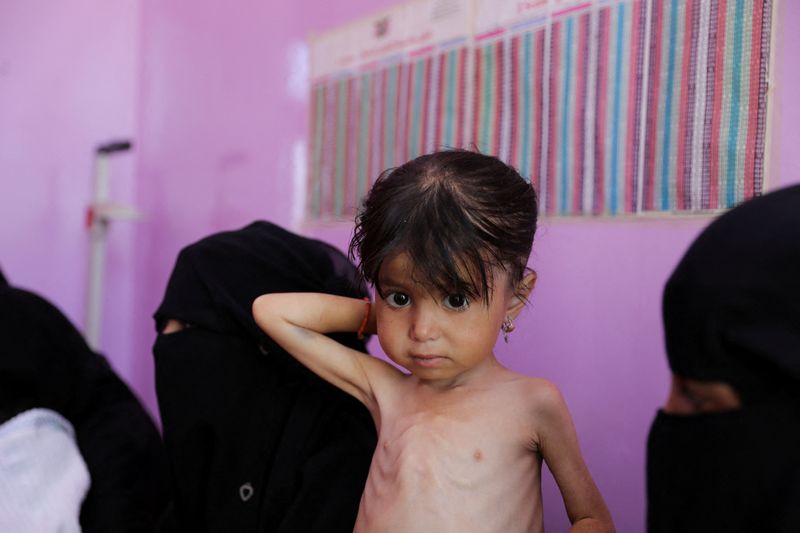By Mohammed Ghobari and Clauda Tanios
ADEN (Reuters) – Acute malnutrition is rising rapidly in government-controlled areas of Yemen, with the most critical cases along the Red Sea coastal zone, U.N. food security experts said in a report published on Sunday.
The years-long stalemated war between the Saudi-backed government and the pro-Iranian Houthi militia has caused the economic collapse of the already vastly impoverished Arabian Peninsula country and one of the world’s worst humanitarian crises.
In a report, the technical panel for the United Nations Integrated Food Security Classification (IPC) in Yemen said that malnutrition has worsened due to the combined effect of the spread of diseases such as cholera and measles, shortages of nutritious food, lack of safe drinking water and broader economic decline.
The number of children in Yemen under the age of five suffering from acute malnutrition, or wasting, has increased by 34 percent compared to the previous year in government-controlled areas, the report says. This equates to around 600,000 children, of whom 120,000 are severely malnourished.
For the first time, the report says, an “extremely critical” level of acute malnutrition has been reported in the southern Hodeidah plains, including Al Khawkhah and Hays districts, which border Yemen’s Red Sea coast, as well as in Al Makha district in the Taiz plains, between November 2023 and June 2024.
The report did not specify whether there had been recent deaths due to severe hunger or what conditions were like in Houthi-controlled areas of the country.
Houthi forces control most of Yemen’s major urban centers, including the capital Sanaa, while the Saudi-backed government is based in Aden in the south.

The Riyadh-led coalition intervened in Yemen in March 2015 after the Houthis ousted the government from Sanaa. The Houthis say they are fighting a corrupt system and foreign aggression.
This multifaceted conflict, in which different factions vie for power, has caused the deaths of tens of thousands of people.





